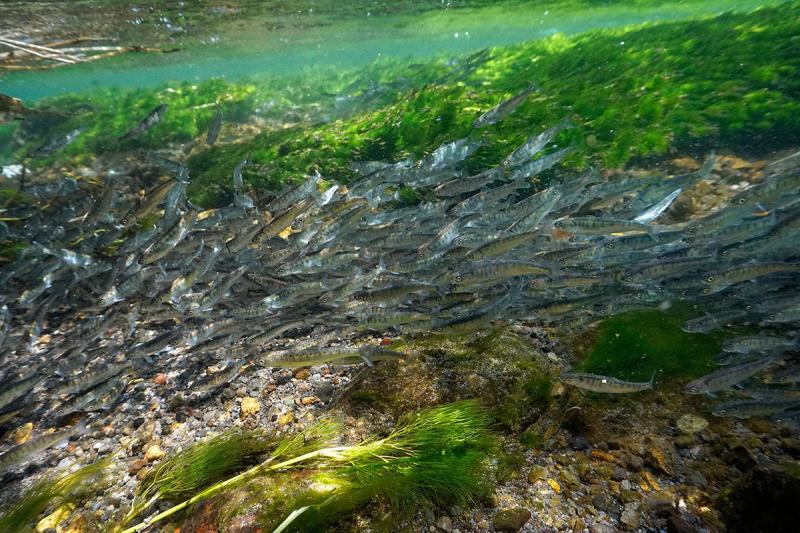Pending shoreline projects in the Salish Sea can now proceed under a new regulatory tool, a programmatic consultation. The tool provides for efficient Endangered Species Act reviews in nearshore habitat of the Salish Sea while also protecting some of the most important but imperiled habitat for threatened salmon and steelhead.
The U.S. Army Corps of Engineers and NOAA Fisheries collaborated to develop the programmatic action to help stop the net loss of nearshore habitat. That’s where young salmon have their last chance to grow before migrating to the ocean. Their growth in the shoreline marsh and wetlands improves their odds of returning from the ocean as adults. Adult salmon support tribal, sport, and commercial fisheries and provide food for endangered Southern Resident killer whales.
The same shorelines attract homes, harbors, seawalls, and other development efforts that have altered or eliminated more than 70 percent of nearshore habitat in Puget Sound and the Salish Sea. These habitat losses have depressed the survival of young salmon in that crucial stage. They have outpaced restoration of salmon habitat, often negating state and federal efforts to help recover fish populations.
“To save the species we have to provide the habitat they need, but we have been losing it faster than we can restore it,” said Kim Kratz, Assistant Regional Administrator for NOAA Fisheries’ West Coast Region. “Finally we are turning a corner.”
The new tool streamlines ESA consultations by identifying measures that proponents can incorporate into their construction and maintenance projects up front that minimize impacts to species and avoid costly changes later. “This makes the process clear and predictable, so everyone knows what’s needed,” Kratz said.
Biological Opinions Identify Measures to Reduce Impacts
NOAA Fisheries develops biological opinions for projects such as wharves and piers permitted by the U.S. Army Corps of Engineers when those permitted activities may adversely affect threatened and endangered species. The biological opinions identify measures to reduce impacts on the species.
More than 100 projects with pending consultations across Puget Sound mounted as NOAA Fisheries and the Corps sought a way forward that would avoid more harm to the species, while allowing development in a predictable and efficient manner.
Use of the programmatic consultation requires project proponents to reduce or offset the long-term impacts with habitat of equal value to ESA-listed species. The consultation should streamline the review process, because it covers many types of projects, avoiding individual evaluations of each one, and can cover both pending and new projects proposed in the coming years.
Proponents have different options to meet the habitat standards. They can redesign their projects to reduce effects, or take additional steps to improve habitat, such as by removing toxic creosote pilings. They also could choose to obtain conservation credits through conservation banks that help fund larger restoration projects.
Calculator Quantifies Habitat Losses
To help project proponents weigh their options, NOAA Fisheries developed a “Conservation Calculator” to assess the value of lost habitat. Based on decades of salmon habitat science, the calculator translates the attributes of habitat to be developed into a number of habitat debits. Proponents can then seek options that provide the credits they need to offset the debits.
“There is flexibility there, but the calculator also provides predictability,” Kratz said. “It ensures nobody is responsible for any more or less than necessary to address the impacts of their projects. The point is to make it easy, so every project does not have to have its own analysis, which is expensive for everyone.”
NOAA Fisheries and the Corps will work together to address pending projects under the new programmatic consultation as quickly as possible. The work builds on a memorandum signed by the NOAA Administrator and the Assistant Secretary of the Army for Civil Works in January. It articulates a mutual understanding of how the agencies evaluate the impacts of maintaining existing structures.



